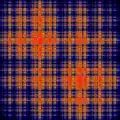What are the known methods for visualizing quantum states of one-dimensional spin chains? They can be based either on their wave functions or density matrices.
My particular interest is in plotting eigenstates of 1D spin chains (e.g. Heisenberg model) in a way in which correlations between particles are related to the self-similarity of the image.
As a side note, I found a Wikipedia Commons image with its description on the topic (a thumbnail below). However, it is not supported neither by a peer reviewed publication nor by a decent preprint. The only text related is extremely drafty.
However, I'm the most interested in published results, and even more when they relate properties of the image to the properties of the state.
